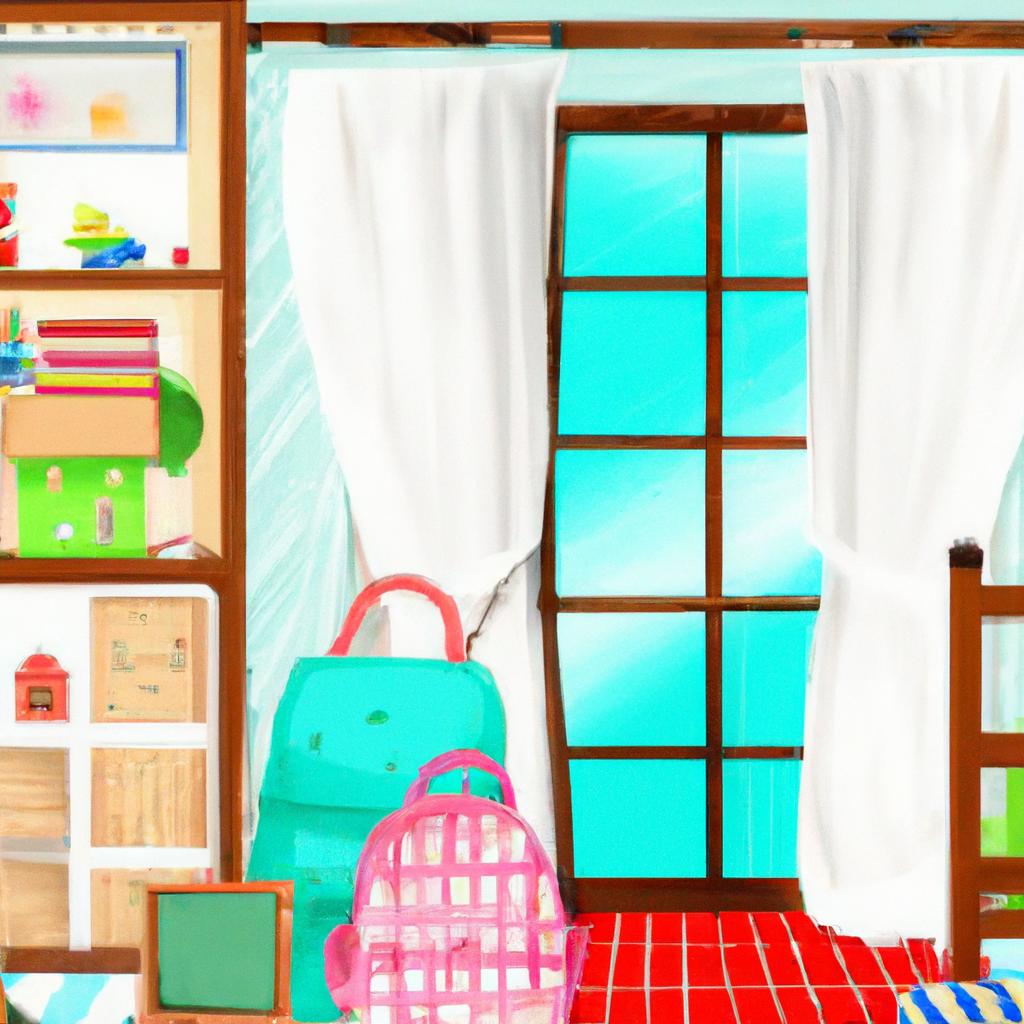
How to Create a Child-Friendly Living Space
Creating a living space that is welcoming and suitable for children can be a challenging yet rewarding task. From designing a safe play area to choosing durable and easy-to-clean furniture, there are numerous factors to consider when creating a child-friendly living space. In this article, we will explore various tips and ideas to help you transform your home into a fun and functional environment for your little ones. So, grab your tools and let’s get started on creating the ultimate kid-friendly living space!
Table of Contents
- Introducing Creative Design Elements for a Child-Friendly Living Space
- Incorporating Safety Measures and Childproofing Techniques
- Utilizing Functional Storage Solutions to Keep Spaces Organized
- Choosing Durable and Easy-to-Clean Furniture for Active Kids
- Q&A
- Wrapping Up
Introducing Creative Design Elements for a Child-Friendly Living Space
Creating a child-friendly living space is all about incorporating creative design elements that are both fun and functional. One way to achieve this is by incorporating colorful and whimsical furniture pieces that are specifically designed for children. Consider adding a small table and chairs set in bright colors or a playful bean bag chair for cozy reading nooks. Additionally, adding storage solutions that are easily accessible to children can help keep the space organized and clutter-free. Think about incorporating open shelving units or toy chests that are both practical and visually appealing.
When it comes to decorating a child-friendly living space, don’t be afraid to think outside the box. Consider adding interactive elements such as chalkboard walls or magnetic boards where children can unleash their creativity. Incorporating soft rugs or floor cushions can create a cozy and inviting space for children to play and relax. Another creative idea is to hang colorful artwork or wall decals that reflect the interests and personalities of the children using the space. By combining practicality with creativity, you can create a living space that is not only child-friendly but also stylish and unique.
Incorporating Safety Measures and Childproofing Techniques
Creating a child-friendly living space is essential for the safety and well-being of your little ones. By , you can ensure that your home is a secure environment for your children to play and explore. Here are some tips to help you create a safe and welcoming space for your little ones:
- Install safety gates at the top and bottom of stairs to prevent falls.
- Secure furniture to the wall to prevent tipping hazards.
- Use outlet covers and cabinet locks to keep dangerous items out of reach.
| Age Group | Safety Measures |
|---|---|
| Infants | Keep small objects out of reach to prevent choking hazards. |
| Toddlers | Use corner guards on sharp edges to prevent injuries. |
Utilizing Functional Storage Solutions to Keep Spaces Organized
When designing a child-friendly living space, it is important to consider utilizing functional storage solutions to keep the area organized. With children’s toys, books, and clothes often scattered around, having designated storage spaces can help maintain a tidy and clutter-free environment. One effective storage solution is incorporating multi-functional furniture, such as ottomans with hidden compartments or bookshelves with built-in toy bins.
Another creative way to keep spaces organized is by incorporating color-coded storage bins. Assigning a specific color to different categories of items can help children easily identify where their belongings belong. Additionally, utilizing adjustable shelving units can provide flexibility in organizing items of various sizes. By implementing these functional storage solutions, parents can create a child-friendly living space that is both organized and visually appealing.
Choosing Durable and Easy-to-Clean Furniture for Active Kids
When designing a living space for active kids, it is essential to prioritize durability and ease of cleaning when selecting furniture. Opt for materials that can withstand the wear and tear of daily use while being simple to maintain. Look for pieces that are made of sturdy materials such as solid wood, metal, or high-quality plastic. These materials are more resistant to scratches, spills, and other mishaps that often come with having energetic children in the house.
Another important factor to consider is the ease of cleaning. Choose furniture with smooth surfaces that can be wiped down quickly with a damp cloth. Avoid fabrics that are difficult to clean or attract stains easily. Additionally, consider investing in furniture with removable, machine washable covers for added convenience. By selecting durable and easy-to-clean furniture, you can create a child-friendly living space that is both stylish and practical for your active little ones.
Q&A
Q: What are some practical tips for creating a child-friendly living space?
A: To create a child-friendly living space, consider using soft, washable fabrics for furniture and rugs, child-proofing sharp edges and corners, and incorporating plenty of storage solutions for toys and books.
Q: How can parents encourage creativity and independence in a child-friendly living space?
A: Parents can encourage creativity and independence by providing a designated art area with supplies, setting up a cozy reading nook, and allowing children to have input in decorating their own space.
Q: How can safety be prioritized in a child-friendly living space?
A: Safety can be prioritized by securing furniture to walls to prevent tipping, using cordless window coverings to prevent strangulation hazards, and installing safety gates at the top and bottom of stairs.
Q: What are some ideas for incorporating educational elements into a child-friendly living space?
A: Parents can incorporate educational elements by displaying educational posters or maps on the walls, setting up a learning corner with puzzles and educational games, and incorporating a mini-library of children’s books.
Q: How can a child-friendly living space promote physical activity and outdoor play?
A: A child-friendly living space can promote physical activity by setting up a play area with climbing structures and a soft play mat, having indoor toys like ride-on toys or balls, and encouraging outdoor play with a backyard or park nearby.
Wrapping Up
In conclusion, creating a child-friendly living space is not just about making sure there are plenty of toys and activities available. It’s about designing a space that not only meets the needs of your child, but also fosters a sense of safety, comfort, and creativity. By implementing the tips and ideas mentioned in this article, you can transform your home into a welcoming and imaginative environment where your child can thrive and grow. Remember, a child-friendly living space is not just for your little ones – it’s an opportunity for the whole family to come together and create lasting memories. So, get creative, have fun, and enjoy the journey of making your living space truly child-friendly.


